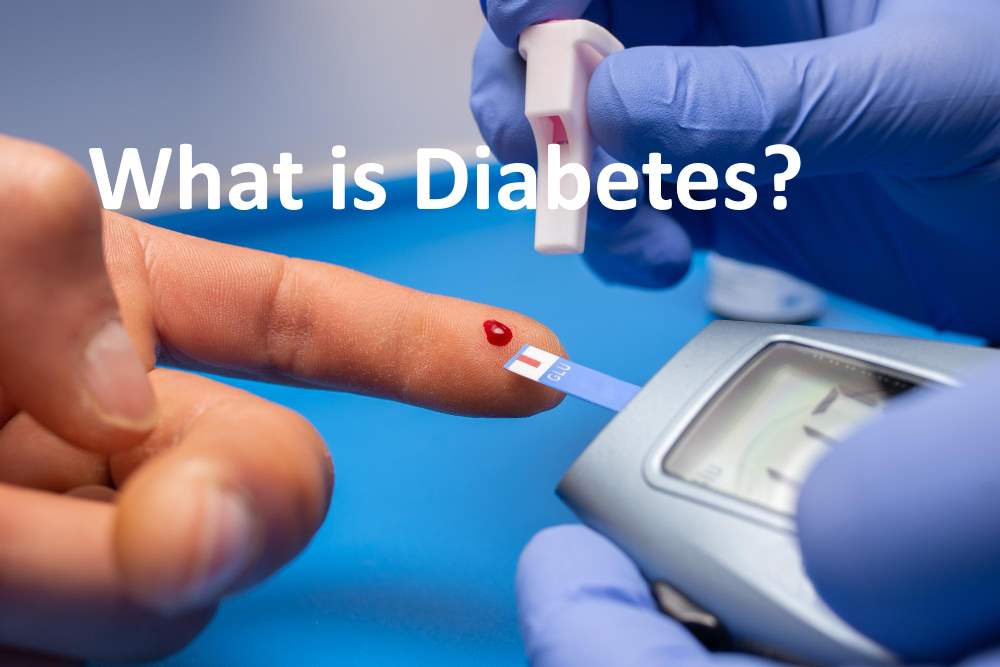Diabetes is a complex group of diseases with various types, each having unique causes, symptoms, and management strategies. Understanding the differences between these types can help individuals better manage their health and improve their quality of life. This article explores the main types of diabetes, including Type 1, Type 2, gestational, prediabetes, and rare forms, and discusses the latest advancements in diabetes care technology.
Key Takeaways
- Diabetes encompasses a variety of types, each with distinct characteristics and management needs.
- Type 1 diabetes is an autoimmune condition, primarily managed with insulin therapy.
- Type 2 diabetes often relates to lifestyle factors and genetics, and can sometimes be managed with lifestyle changes.
- Gestational diabetes occurs during pregnancy and requires careful monitoring to protect both mother and baby.
- Technological advancements, such as continuous glucose monitors and insulin pumps, are improving the quality of life for diabetics.
Understanding Diabetes Types: A Brief Overview

What is Diabetes?
Diabetes mellitus, commonly referred to as diabetes, is a metabolic disease characterized by high blood sugar levels over a prolonged period. Glucose is vital for cell function as it provides energy and supports overall health. However, in diabetes, the body’s ability to process glucose is impaired. Learn more here.
The Role of Insulin
Insulin is a hormone that regulates blood sugar by facilitating the transport of glucose into cells. In individuals with diabetes, the body either doesn’t produce enough insulin or can’t effectively use the insulin it does produce. This disruption can lead to various health issues if not managed properly.
Common Symptoms
The symptoms of diabetes can vary but often include increased thirst, frequent urination, extreme fatigue, and blurred vision. Recognizing these symptoms early can be crucial for effective management and prevention of more severe complications.
Type 1 Diabetes: An Autoimmune Disorder

Causes of Type 1 Diabetes
Type 1 diabetes is primarily an autoimmune disorder where the body’s immune system attacks and destroys the insulin-producing beta cells in the pancreas. This destruction leads to a lack of insulin, a crucial hormone for regulating blood sugar levels. Genetic factors and environmental triggers are believed to play a role, but the exact cause remains unknown.
Managing Type 1 Diabetes
Effective management of Type 1 diabetes involves a combination of regular blood glucose monitoring, insulin therapy, diet adjustments, and physical activity. Patients often use insulin pumps or multiple daily injections to maintain blood glucose levels within a target range.
- Regular blood glucose monitoring
- Insulin therapy
- Diet adjustments
- Physical activity
Daily Life with Type 1 Diabetes
Living with Type 1 diabetes requires careful daily management but can be well-controlled with the right strategies. Individuals may experience challenges such as dealing with anxiety disorders, maintaining a balanced diet, and the need for constant monitoring of blood glucose levels. Support from healthcare providers and loved ones is crucial in managing the emotional and physical aspects of the disease.
Type 2 Diabetes: Lifestyle and Genetics

Risk Factors for Type 2 Diabetes
Type 2 diabetes is influenced by a combination of lifestyle factors and genetics. Obesity, physical inactivity, and poor diet are major risk factors. Additionally, family history plays a crucial role, indicating a strong genetic component. The risk increases if a parent or sibling has type 2 diabetes.
Prevention and Management
Preventing type 2 diabetes involves adopting a healthy lifestyle. Key strategies include:
- Maintaining a healthy weight
- Engaging in regular physical activity
- Eating a balanced diet rich in fruits, vegetables, and whole grains
- Regularly monitoring blood glucose levels
These steps can significantly reduce the risk of developing type 2 diabetes and manage existing conditions.
Complications Associated with Type 2 Diabetes
Long-term complications of type 2 diabetes can be severe and include cardiovascular disease, nerve damage, kidney damage, and vision problems. Early detection and management are crucial to prevent these complications. Regular check-ups and maintaining blood sugar levels within target ranges are essential for managing health and preventing severe complications.
Gestational Diabetes: Diabetes During Pregnancy
 Gestational diabetes is a condition that develops during pregnancy and usually resolves after giving birth. It occurs when the body cannot produce enough insulin to handle the increased blood sugar levels during pregnancy.
Gestational diabetes is a condition that develops during pregnancy and usually resolves after giving birth. It occurs when the body cannot produce enough insulin to handle the increased blood sugar levels during pregnancy.
Understanding Gestational Diabetes
Gestational diabetes affects how your cells use sugar (glucose). It can cause high blood sugar that can affect your pregnancy and your baby’s health. The condition requires careful management to ensure both mother and baby remain healthy throughout the pregnancy.
Risks to Mother and Baby
Gestational diabetes can increase the risk of complications during pregnancy and delivery. These include high blood pressure, premature birth, and higher-than-normal birth weight. Long-term, mothers can have an increased risk of developing type 2 diabetes.
Management Strategies
Managing gestational diabetes involves monitoring blood sugar levels, maintaining a healthy diet, and regular physical activity. Sometimes, insulin or other medications may be necessary. Pregnant women must work closely with their healthcare provider to manage the condition effectively.
Prediabetes: A Warning Sign
 Prediabetes is a critical health condition where blood sugar levels are higher than normal but not yet high enough to be diagnosed as type 2 diabetes. Early identification and intervention can prevent the progression of type 2 diabetes and significantly reduce the risk of other complications.
Prediabetes is a critical health condition where blood sugar levels are higher than normal but not yet high enough to be diagnosed as type 2 diabetes. Early identification and intervention can prevent the progression of type 2 diabetes and significantly reduce the risk of other complications.
Identifying Prediabetes
Prediabetes often has no clear symptoms, making it difficult to detect without proper testing. Key indicators include higher than normal fasting glucose levels or an abnormal A1C test. Regular screening is recommended, especially if you have risk factors such as obesity, a sedentary lifestyle, or a family history of diabetes.
Lifestyle Changes for Prediabetes
Implementing lifestyle changes is crucial for managing prediabetes. Effective strategies include:
- Maintaining a healthy weight
- Engaging in regular physical activity
- Adopting a balanced diet rich in fiber and low in sugar and processed foods
These changes can help lower blood sugar levels and improve overall health.
The Importance of Monitoring
Continuous monitoring of blood sugar levels is essential for people with prediabetes. This helps in making informed decisions about diet and exercise, and in tracking progress. Regular check-ups with a healthcare provider are also vital to adjust any necessary interventions and ensure optimal health.
Rare Types of Diabetes

Monogenic Diabetes
Monogenic diabetes is a rare form of diabetes that results from mutations in a single gene affecting insulin production. This type of diabetes is often diagnosed in childhood or early adulthood and can sometimes be mistaken for type 1 diabetes. Treatment typically involves managing blood sugar levels with diet, exercise, and possibly insulin injections.
Cystic Fibrosis-Related Diabetes
Cystic Fibrosis-Related Diabetes (CFRD) is a unique type of diabetes that occurs in people with cystic fibrosis. CFRD is caused by the thick, sticky mucus associated with cystic fibrosis that damages the pancreas, preventing it from producing enough insulin. Management includes monitoring glucose levels and using insulin therapy as needed.
Other Rare Forms
Other less common types of diabetes include conditions such as Wolfram syndrome, Alström syndrome, and mitochondrial diabetes. These forms are extremely rare and require specialized care from healthcare professionals experienced in these conditions.
Technological Advances in Diabetes Care

Continuous Glucose Monitors
Continuous Glucose Monitors (CGMs) have revolutionized diabetes management by providing real-time data on blood glucose levels. This technology allows for better control and immediate adjustments, reducing the risk of both hypo- and hyperglycemia. Key advancements in CGM technology include improved accuracy and integration with smartphones and smartwatches.
Insulin Pumps
Insulin pumps deliver continuous subcutaneous insulin infusion, mimicking the way a healthy pancreas works. They are particularly beneficial for those with unstable diabetes or those who require complex insulin regimens. The latest models feature adaptive algorithms that adjust insulin delivery based on CGM data, enhancing patient safety and glycemic control.
Future Innovations
The future of diabetes care looks promising with ongoing research into artificial pancreas systems and smart insulin molecules. These innovations aim to automate insulin delivery and glucose regulation, potentially transforming diabetes management. The integration of AI and machine learning in these devices is expected to further personalize treatment and improve outcomes.
Conclusion
In conclusion, understanding the different types of diabetes is crucial for effective management and treatment. Whether it’s Type 1, Type 2, gestational diabetes, or any other form, each type has its unique characteristics and management strategies. By being informed about the specifics of each type, individuals can better collaborate with healthcare providers to tailor a management plan that best suits their condition. Remember, early diagnosis and proactive management are key to controlling the disease and maintaining a high quality of life.
Frequently Asked Questions
What are the main differences between Type 1 and Type 2 diabetes?
Type 1 diabetes is an autoimmune condition where the body attacks insulin-producing cells, typically diagnosed in children and young adults. Type 2 diabetes is more common and usually develops due to genetic factors and lifestyle choices, such as poor diet and lack of exercise, and it often appears in adults.
Can diabetes be cured?
Currently, there is no cure for diabetes, but it can be managed effectively with medication, lifestyle changes, and proper diet. Type 1 diabetes requires lifelong insulin therapy, while Type 2 diabetes may be managed with lifestyle adjustments and medication.
What is gestational diabetes and how does it affect pregnancy?
Gestational diabetes is a type of diabetes that develops during pregnancy and usually disappears after giving birth. It can increase the risk of complications for both mother and baby, such as high birth weight and preterm birth, and requires careful management and monitoring.
What lifestyle changes can help manage prediabetes?
Managing prediabetes involves adopting a healthy diet, increasing physical activity, losing excess weight, and regularly monitoring blood sugar levels to prevent the progression of Type 2 diabetes.
Are there any new technologies that help in managing diabetes?
Yes, recent advancements include continuous glucose monitors (CGMs) and insulin pumps that help maintain blood sugar levels more consistently. Future innovations may include artificial pancreas systems and more sophisticated monitoring devices.
What are some rare types of diabetes and how are they different?
Rare types of diabetes include monogenic diabetes, which is caused by mutations in a single gene, and cystic fibrosis-related diabetes, which is common among people with cystic fibrosis. These forms require specialized management strategies distinct from those used for Type 1 and Type 2 diabetes.





